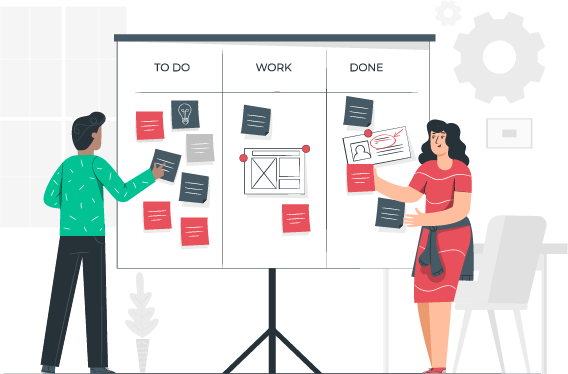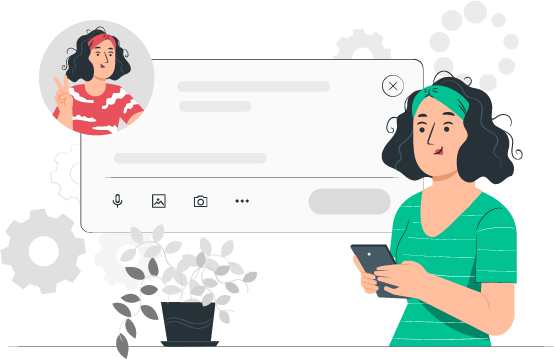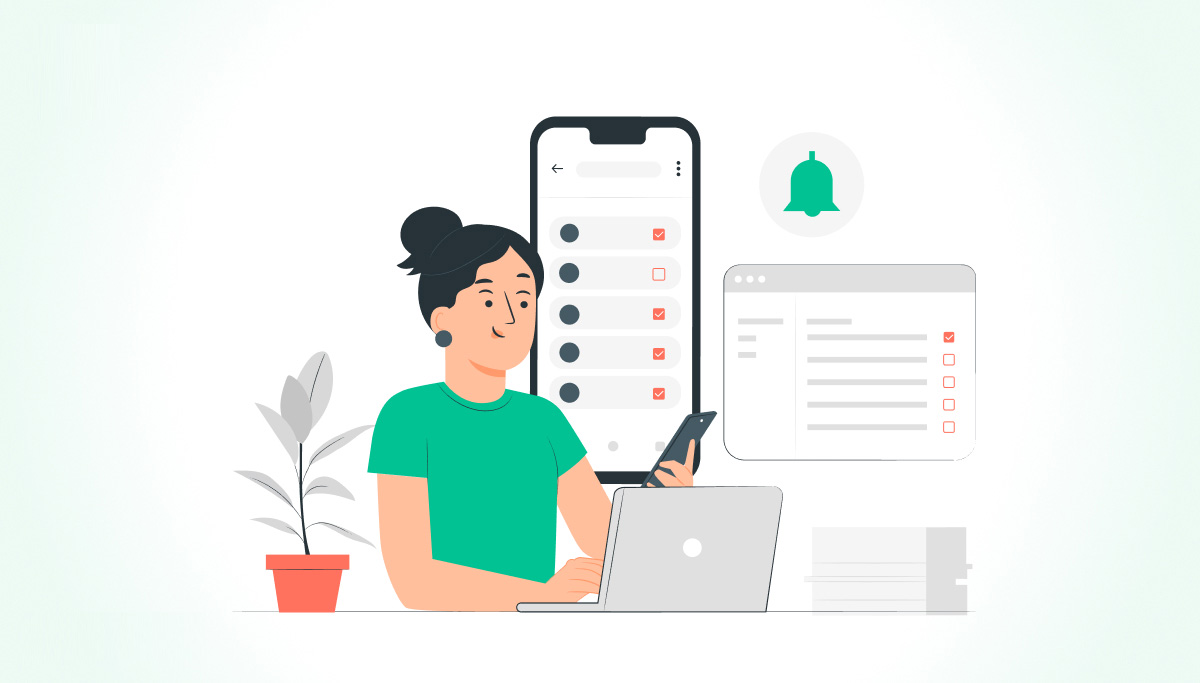For new SaaS customers, there is always a learning curve when adopting an unfamiliar product. No matter how intuitive your software is, there is a period when customers are unsure about what your product can do for them and whether they will like using it. During this time of uncertainty is your company’s job to onboard customers with your software.
63% of customers think onboarding is key to their decision to subscribe to a product. Long-term customer retention and success hinges on customers’ ability to learn to use your product successfully. If customers sign up and all they encounter is a mess of features, this doesn’t translate into long-term stickiness with your product.
Customer acquisition is just the beginning of your journey with the customer. New customers need to be carefully nurtured if they are going to flourish into repeat customers with increased customer lifetime value (LTV) for your business.
What is Client Onboarding?
Client onboarding is the process of introducing new customers to your software, and teaching them how to use its various features and capabilities. Onboarding is achieved through various methodologies including tooltips, tutorials, walkthroughs and self-service content.
Customer onboarding leads your customers towards time to first value, and results in them experiencing their first “aha” moment with your software. It helps customers learn how your software can offer benefits and enables them to solve critical problems.
Onboarding sets the tone for the relationship between your customer and your brand. It’s their first significant interaction after the sales process and is a chance for your company to show how it will treat its customers.
It’s your opportunity to expose your customers to adopting your product and experiencing overall success.
Why Does Effective Customer Onboarding Matter?
74% of customers will switch to an alternative solution if the onboarding process is too complicated. As a result, onboarding is a vital way for SaaS companies to engage their customers and ensure they find success with their product.
It improves customer retention
Customers who are successfully onboarded are more likely to be retained in the long-term. When they experience initial value with your product, they come to see it as essential to their workflows.
And when you think that customer retention is responsible for 65% of a company’s business and is far cheaper than customer acquisition, you’ll agree that customer retention is an important goal to focus on.
It reduces churn
Customers who don’t see your product as valuable are more likely to churn in the long run. Customers who are likely to churn are those customers who don’t experience success with your product and therefore don’t see the point in paying their monthly or annual subscription cost.
Successful onboarding prevents churn because it engages the customer with your software and fulfills the promises made to them by the sales and marketing teams.
It decreases customer support costs
Customers who understand how to effectively use your software are less likely to fire off an email or make a call to your customer support team. Personally assisting customers with your software is a costly endeavor and diverts resources from other important business functions.

You have also failed your customers when you have not succeeded in teaching them how to use your product on their own. If customers don’t understand how to use basic features without the help of your support team, your business is in trouble.
It creates customer delight
74% of companies have a dedicated onboarding team. When customers are properly onboarded, they are delighted with the experience of using your software and will be happy that they made the decision to choose your product. Focusing on customer happiness is an important part of building a sustainable SaaS product that experiences consistent growth.
The goal is to surpass the expectations that customers have of using your software and give them a reason to stick around. There are plenty of competitors out there trying to lure your customers away, but providing a delightful customer experience is one way to ensure that doesn’t happen.
It earns you customer advocates
When customers have an exceptional experience of learning to use your software, they are more likely to recommend your app to others. 92% of individuals trust word-of-mouth referrals, so advocacy is an important way for your business to earn new customers.
Customers will only be willing to recommend using your software if they truly appreciate the quality of the onboarding experience. When they think your business has gone beyond the bare minimum of onboarding, they will spread the word about your company to their networks.
7 Best Practices for Effective Customer Onboarding
1. Treat customers as partners in a relationship
When customers adopt your software, they are investing in a relationship with your company that will potentially span months or years. It doesn’t matter how well you treat them while they are a sales prospect, but their level of trust and satisfaction in the relationship depends on their experience during the onboarding phase.
In short, start as you mean to go on. Treat customers like royalty and they will reward you with increased loyalty and satisfaction. The onboarding phase is your chance to demonstrate that you truly value their business and desire to nurture them during the long-term.
2. Adopt the right onboarding software
Software like Churn360 can really help your SaaS company during the onboarding phase. Churn360 helps you track customers throughout the entire customer journey lifecycle by identifying those customers who are at risk of churn. You can implement the steps that need to be taken by customers during the onboarding process by adding tasks, activities and milestones.
It’s clear which customers haven’t completed certain tasks during onboarding, enabling you to follow up with them and find out if there are any problems. Customer Success Managers will have their own tasks that enable them to keep track of customers and manage large volumes of new clients.
3. Walk customers through using your software
When customers first sign up to your software, you need to provide interactive walkthroughs that will help customers get onboard with your most important features. If you don’t offer them a walkthrough, it’s down to the individual customer to play around with your software and potentially fail at finding value.
Interactive walkthroughs can be optional but they are a great way to introduce customers to the way that your software works. Customers learn best by doing and you can show them exactly how a feature operates.
4. Communicate with customers
It’s common for businesses to spend a lot of time nurturing sales leads and then drop off once they have acquired a customer. This is a big mistake as customers who are going through the onboarding process are ripe for your business to reach out and communicate with them.

Opening up the channels of communication with your Customer Success team is a vital way to establish rapport with your customers, and assure them that your team is around to help them if they get stuck.
5. Implement automations where possible
It’s impossible for you to manually onboard every new customer who signs up to your SaaS. Customers expect to be able to get going with your software straight away, instead of waiting around for the attention of a Customer Success Manager.
Utilizing automated video sequences is a great way to onboard new customers and show them how your software works. Even automated email sequences are a vital way to show customers what they need to do to get set up. Self-service content is an important part of your onboarding strategy that enables you to help potentially limitless numbers of customers.
6. Use an onboarding checklist with progress bar
When you’re onboarding your new customer your objective is to take them on the shortest path to time to first value. Customers appreciate it when you provide them with a checklist that shows them the exact number of steps to take that will guide them to success. This makes your software seem more manageable and reduces the uncertainty of learning a new system.
If you include a progress bar then customers will know exactly how much time it will take for them to complete your onboarding process. This makes it more likely they will follow the process to completion instead of abandoning onboarding before they achieve success.
7. Check in with customers after onboarding
Completing the onboarding process isn’t the end of your communication with customers. Perhaps they have finished onboarding but are still unclear about aspects of your software. You need to make it plain to these customers that your business is still available for them and willing to help.
If one of your Customer Success Managers could check in with new clients after onboarding this will certainly assist them on their path to success. You can significantly reduce churn if you address customer problems and show them how your software can provide value.
Get Started Creating Your Client Onboarding Plan
Effective customer onboarding is an opportunity not to be missed when it comes to growing your SaaS. Acquiring new customers is totally pointless if you don’t familiarize them with your software and accelerate time to first value. Your software system might be the most intuitive platform on the planet but it will still require resources to train new customers.
Onboarding new customers is the fastest way to improve customer retention and reduce churn. Customers who experience delight with your software are more likely to recommend your brand to others and become lifetime advocates.
Software like Churn360 supports you in your onboarding process and ensures that your customer training is a success. SaaS companies nurturing new customers need the assistance of software like Churn360 to make sure no one slips through the cracks.


